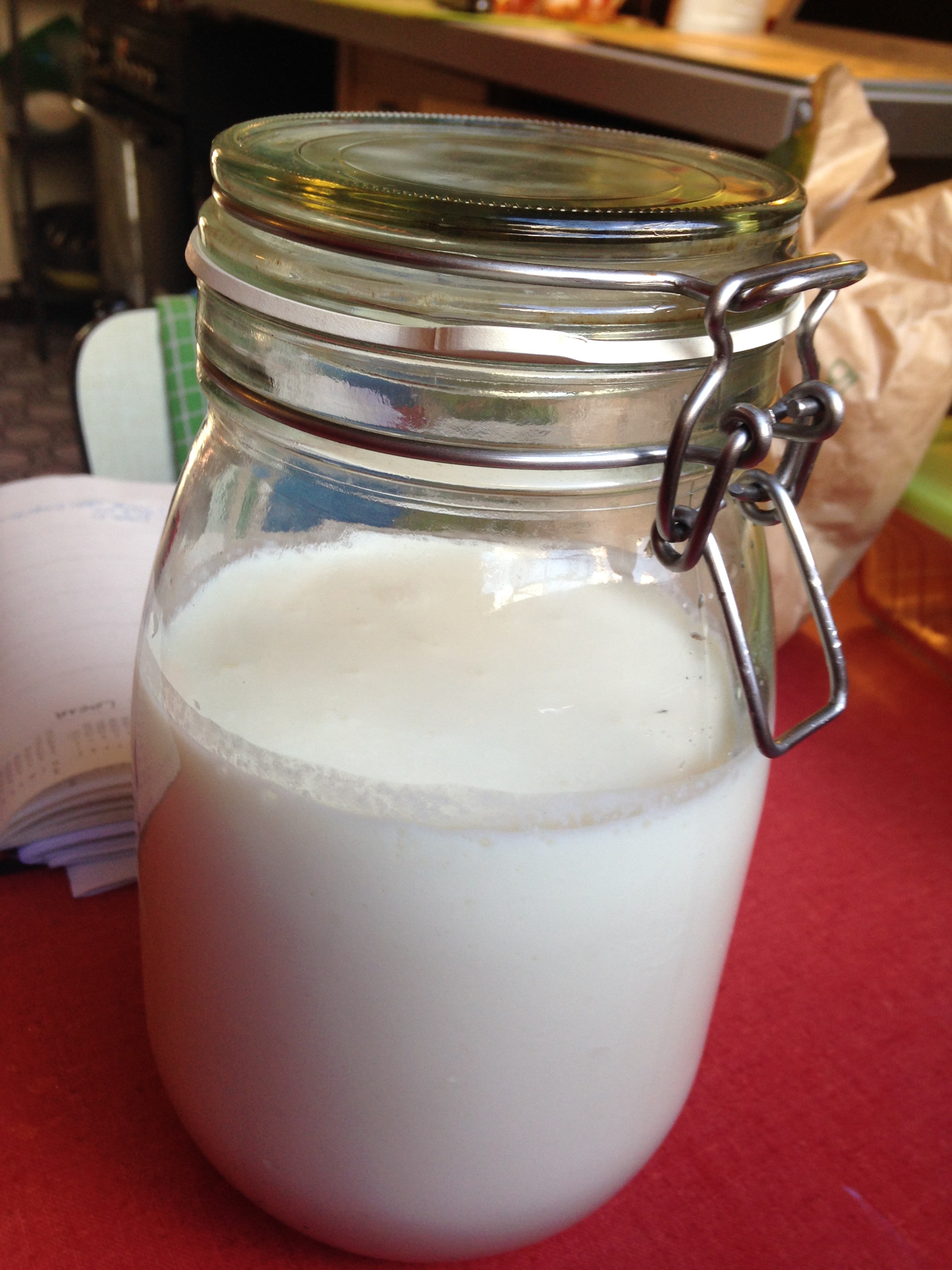
Kefir grains
While milk kefir is a traditional Turkish drink with its roots in the Caucasus Mountains, I had never heard about it growing up — which is quite remarkable if you think about it! As my interest in making my own cultured foods grew, I knew that cultured dairy was a great place to start. As traditional cultures around the world knew well, incorporating fermented foods into your diet is not only extremely beneficial for you and your family’s health, it is often delicious too.
Milk kefir easily tops my list of homemade fermented foods since it is so simple to prepare and consume. I actually find it even easier than homemade yogurt since there are fewer steps involved and no temperature control to worry about. Not only that, on the nutritional front it gives yogurt a run for its money: kefir not only has many more strains of beneficial bacteria than its milky cousin, it’s also rich in many vitamins and minerals (especially when made with raw milk), and is said to have anti-inflammatory and even cancer-fighting properties. Since the longer kefir is fermented the lower the lactose content, it may even be possible for lactose-intolerant individuals to consume it. All these benefits also make it a great early food for babies who can start consuming it starting around 8 months of age.
I’d heard that kefir grains get passed on from person to person, and lo and behold, found someone on the Internet who could send me some for the mere price of postage. The “grains” are little gelatinous clumps of bacteria and yeast that, when stirred into fresh milk, eat the milk sugars and create the famous probiotic drink. When my grains arrived in the mail one cold day in December when my baby was just days old, I of course wondered why on earth I had chosen this particular moment to take on yet another project. But I soon found out that milk kefir grains are quite resilient little buggers that are not very labor-intensive to care for. More than two years on, they’re still going on strong even though I’ve gone for long periods without preparing a batch. They may in fact last a whole lifetime.
So if you’re interested in making your own kefir (and I really don’t recommend store-bought varieties since they don’t have the same properties), you first have to procure yourself some grains. Unfortunately the person who sent them to me no longer does so but I’m pretty sure you can find someone else easily. When you first receive them, follow the instructions of the person who sent them to make your first batch. Not only you can use and reuse these grains forever and ever, they also slowly multiply so you can eventually pass some on if anybody’s interested.
Another important point: the quality of the ingredients, in this case milk, matters. If you haven’t gotten around to sourcing good quality milk until now, let this be your opportunity. It should be raw or at least fresh organic milk. The ultra-pasteurized UHT stuff (basically anything that’s in a Tetrapak) is as good as dead and will not produce kefir which is a living food. I personally prefer Bernard Gaborit brand milk, if possible the raw milk with the yellow cap (or the fresh milk with the blue cap). Their Jersey cows are a breed that produces a much creamier and more digestible milk.
So how exactly do we consume it? As a Turk, drinking this straight chilled with a little salt comes naturally to me (as the taste reminds me of ayran, our national yogurt drink). My little boy has been downing it this way from about six months old. Another great way to enjoy it is smoothies. Add any combination of frozen berries, mangoes, bananas, dates, honey, and a few raw egg yolks (from free-range hens) to a few cups of kefir, and you’ve got an extremely nutritious and delicious drink. You can also strain it with some muslin cloth and get something closer to lebneh. The liquid that remains is whey which you could use as a protein supplement (for ex, throwing it in a smoothie) so you could freeze it in ice cube trays.
I hope I have convinced you to try making your own milk kefir! Once you find yourself some grains, it really is a no-brainer.
Resources
Dom’s Kefir-Making in-site – vast repository of information on all things kefir
Wild Fermentation – Sandor Ellix Katz is the authority on all things fermentation, kefir and otherwise
Cultures for Health – this is a US website that sells all kinds of material for making your own ferments where there is also lots of information on home culturing
Nourished Kitchen’s article on milk kefir
Ingredients
- 1-2 tablespoon milk kefir grains
- 1 liter fresh organic milk (I like the Bernard Gaborit raw or fresh milk)
- A glass jar with lid (at least 1.5-liter in volume)
- Stainless steel or plastic strainer
Instructions
- Add the kefir grains at the bottom of your jar. Add the milk and stir.
- Place jar at room temperature in a dark spot and stir at least once in the next 24 hours. The kefir will be ready between 24 and 36 jours, and it's really up to your individual taste. A shorter fermentation will result in a milder kefir whereas the longer it stays, the more pungent it will become.
- When you are happy with the results, strain the liquid to separate the grains. At this point, you can use the grains to start a new batch right away or place them in a small glass jar, cover with fresh milk and store in the refrigerator.
- Put the strained liquid kefir in a clean glass container. At this point, you can place it in the fridge or keep it for another 24 hours at room temperate with the lid sealed. This will result in a more fizzy kefir.
Notes
If you're keeping the kefir grains inactive in the fridge for a while, make sure to change out the milk every week (although they are very forgiving if you forget to do this regularly).
You can serve milk kefir to baby from 6 to 8 months of age. It is more digestible than regular milk. You can also make it with other animal milks like goat or sheep if you can get your hands on it.



